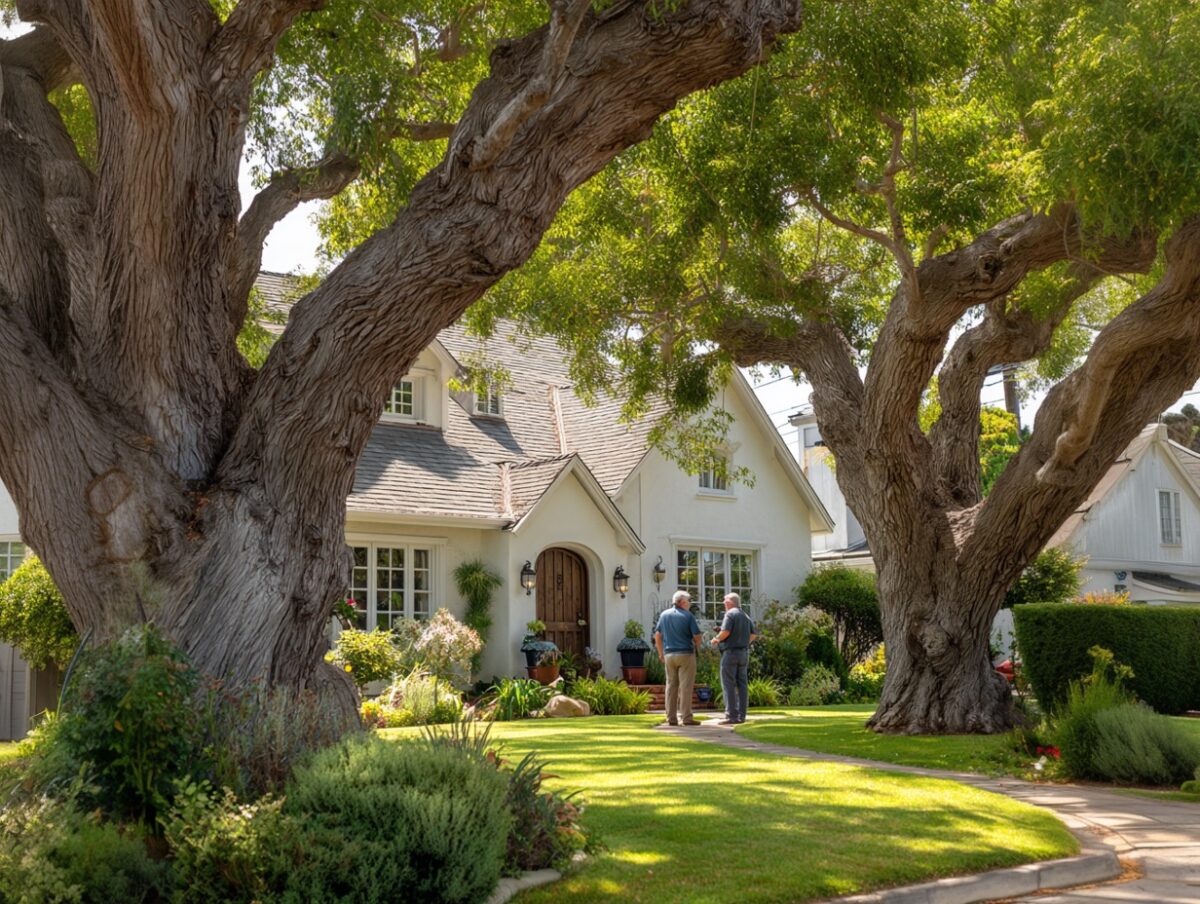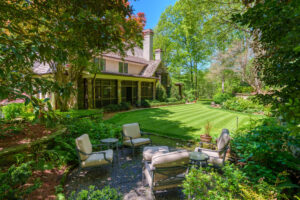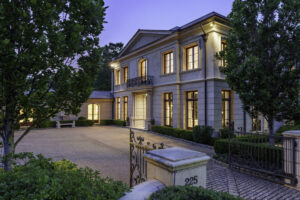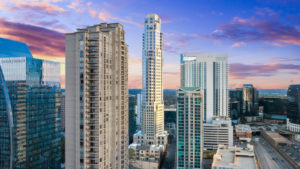Atlanta, proudly known as the “City in the Forest,” has recently enacted the most extensive overhaul of its tree protection ordinance in over two decades. Unanimously approved by the City Council on June 16, 2025, this new legislation aims to address the decline of Atlanta’s urban forest. For property owners in Buckhead, an area celebrated for its particularly dense tree cover and predominant R-1, R-2, and R-3 residential zoning, these changes are poised to add significant hurdles to build or expand a home and greatly increase the cost of permitting.
Get ready. The new law goes into effect January 1, 2026. This article covers what every Buckhead property owner needs to know.
Key Changes and Their Contentious Implications
The new ordinance introduces several critical updates that will directly influence homeowners planning renovations, additions, or new builds, especially in the R-1, R-2, and R-3 zoning districts most common in Buckhead. While proponents laud these changes as necessary steps, many express deep reservations about their effectiveness and fairness.
1. Increased Minimum Trees Retained (MTR) – A Tightening Grip on Green Space: The ordinance significantly increases the minimum percentage of existing trees, measured by Diameter at Breast Height (DBH) inches, that must be preserved on a site for new subdivisions, new lots of record, and vacant lots in order for a new home to qualify for the “Maximum Tree Recompense” that some new homes rely on to be economically viable.
- For R-1 zoned properties, the MTR rises from 45% to 65%.
- For R-2 and R-2A properties, it increases from 40% to 50%.
- For R-3 and R-3A properties, the retention standard moves from 35% to 40%.
This means developers and builders must now factor in a substantially higher retention rate for existing trees when designing projects, making it more challenging to clear large portions of a lot for construction.
2. Sharply Increased Recompense Fees and Caps – A Heavier Financial Burden: The fees paid for removing trees, known as recompense, have seen a dramatic increase. The base tree recompense rate has been raised to “$140 an inch,” up from the previous “$30 for each diameter inch” that had been in place since 2001. Greg Levine, executive director of Trees Atlanta, noted that “Recompense has been way too low for way too long. [Developers are] paying for a fraction of what it costs to plant a tree,”.
However, the application of these fees and new caps remains a contentious point. While the ordinance caps tree removal fees for new subdivisions, new lots of record, and vacant lots, “only if they preserve a specific percentage of the site’s existing trees”. These caps have been increased substantially.
- For R-1 and R-2 properties, the maximum recompense per acre has jumped from $10,000 to $35,000.
- For R-2A, R-3, and R-3A properties, the cap increased from $7,500 to $25,000 per acre.
This steep increase can significantly impact project costs. Charlie Sears of Land Plus Associates explained, “As an example, removing a 20-inch DBH tree without planting a replacement tree now requires $2,800 in recompense, up from $700 under the previous ordinance. As most projects in the heavily wooded Buckhead area involve multiple tree removals, this new ordinance represents a substantial change in development costs that property owners need to factor into their budgets.”
Jim Cheeks, CEO of Fortas Homes, expressed even stronger concerns, stating, “This draft ordinance devastates the ability for me to provide affordable housing in Atlanta,” and worried it could “stifle new housing development and make it impossible to hit Mayor Andre Dickens’ goal of building and preserving 20,000 affordable housing units in the next five years.” Some developers concede that the “cost of replacement of trees is much higher than it used to be.” For homeowners, this means that removing large, healthy trees to make way for extensive improvements or a larger home will now be a far more expensive endeavor.
However, many preservationists lament the watering down of the ordinance. Charles Tisdale is a retired attorney that convened a citizens group five years ago to write the first draft of the new tree protection ordinance. He is not pleased. “As a retired King & Spalding environmental lawyer and Tree Conservation Commission member, I’m gravely concerned about Atlanta’s new Tree Protection Ordinance (TPO). After our Citizens Group meticulously negotiated a balanced TPO with city departments and developers for four years, the Mayor, swayed by developers, replaced it with an ordinance that abandons meaningful tree protection and preservation standards. This new TPO allows clear-cutting with minimal recompense—a mere $140 per inch, down from $260—and even includes recompense caps, openly celebrated by developer associations. This decision, ignoring our city’s tree loss and air pollution crises, will, I fear, permanently damage Atlanta’s tree canopy and harm our children’s health within five years.”
3. Broad Arborist Authority and Subjective Criteria – Navigating a Less Predictable Path: A pivotal and concerning aspect of Atlanta’s newly enacted tree ordinance is the considerable authority vested in the city arborist, allowing for permit denials based on subjective interpretation rather than clear, measurable standards. This shift marks a less predictable path for anyone in Buckhead—or throughout Atlanta—considering building or expanding a home. The ordinance grants the City Arborist Department authority to make several key subjective determinations that could impact private property development: The department must determine whether proposed improvements “cannot reasonably be designed or positioned to further increase tree protection” and whether designs minimize impacts to trees “to the maximum extent practicable.” Additionally, the city can require modifications to site plans, including changes to construction methods or requiring reuse of previously developed areas.
In an interview, Charlie Sears with Land Plus Associates highlighted a little-noticed provision: “A new requirement grants the City Arborist the authority to mandate the reuse of existing developed areas on private property, including driveways, parking lots, building footprints, and lawn areas. This provision could significantly alter a property owner’s development plans and design preferences. For example, a homeowner seeking to build a swimming pool might be directed to an existing lawn area or patio, irrespective of their aesthetic or functional preferences. Similarly, property owners might be required to reuse a poorly located driveway instead of relocating it during redevelopment. This regulation introduces a mechanism for the city to influence basic property layout decisions, traditionally within the owner’s domain, based on interpretations that may vary between projects and reviewers.”
The deliberate removal of “numeric tree preservation standards” from the final version of this ordinance, despite calls from legal experts, has left a void that can only be filled by the arborist’s personal judgment. As attorney Craig Pendergrast warned, this vagueness is “setting the stage for litigation on all fronts.” Property owners may well argue that such broad discretion amounts to a regulatory taking, where the public’s desire for tree preservation unduly burdens individual property rights, forcing courts to balance community welfare against individual landowners’ entitlements. This legal ambiguity inevitably invites challenges, creating a more volatile environment for development.
4. Don’t Touch That Tree: Stiff Penalties for Illegal Removals: The maximum penalty for illegal tree removals has been drastically increased from $60,000 to “$200,000 per disturbed acre” in cases where the number of trees cannot be determined. For individual unpermitted removals, fines are $500 for the first offense and $1,000 for each subsequent violation, plus recompense for replacement. This stringent penalty underscores the city’s seriousness about protecting its tree canopy and serves as a strong deterrent against unpermitted clearing. More importantly for residents to understand, is that the CRZ of any tree removed illegally becomes a tree-save-area that cannot be used for development. According to Section 158-86(b)(2), “The area making up the CRZ of the destroyed tree(s) shall be retained as a tree save area for replanting, and required replacement tree(s) shall be placed in the tree save area to the extent feasible.”
While preservationists lament the watering down of their original TPO, developers must grapple with yet another cost category that is set to increase substantially. In the end, neither side got exactly what they wanted.
Building in Buckhead: Strategies for Navigating the New Tree Ordinance Landscape
For Buckhead homeowners considering expanding their homes or building new ones, the new ordinance ushers in a more stringent and potentially complex era:
- Prioritize Tree Preservation Early: The significantly higher tree impact fees mean that early planning will be critical, according to Charlie Sears with Land Plus Associates: “Take advantage of the Pre-Application Conference with the City Arborist Department, as outlined in Section 158-51(f). By hiring a knowledgeable design professional to help develop an informed concept before that meeting, a homeowner can speed up the entire process and gain early insight into the Arborist’s discretion.”
- Anticipate Increased Costs: Be prepared for substantially higher costs if your project necessitates removing healthy, regulated trees. The increased recompense fees are considerable, and the decision to remove a large tree will now come with a much steeper price tag.
- Navigating Arborist Discretion: The broad powers granted to the city arborist, relying on subjective interpretations of terms like “unnecessarily impact” or “reasonably designed,” introduce a degree of uncertainty into the permitting process. Homeowners may face unexpected requirements for site plan modifications or specific construction techniques. Close collaboration with a certified arborist who understands these evolving interpretations will be crucial for successful permit approval.
- Permit First, Sell Second: Anyone wanting to sell an undeveloped lot of a potential tear-down home in Buckhead may want to seriously consider going through the design and permitting process first. Permitting a “placeholder” home may be the only way to prove the lot’s potential to a prospective buyer who may be concerned about the subjectivity of the arborist standards.
Ultimately, the new tree ordinance is a clear signal from the City of Atlanta that protecting its “City in the Forest” identity is a top priority. For Buckhead property owners, this translates into a greater responsibility and a more deliberate, and potentially more challenging, approach to tree preservation and future development.





